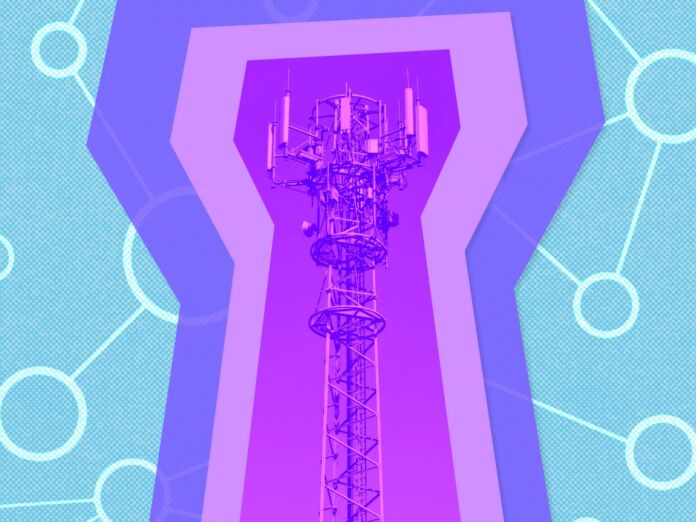
The telecommunications industry is undergoing a remarkable transformation, heavily fueled by the convergence of IoT, machine learning, and edge computing. This convergence is not only creating new opportunities for Mobile Network Operators (MNOs) and Tower Operations but also presents challenges that must be addressed to fully leverage the potential of these technologies.
Tower Operating
The advent of the Fourth Industrial Revolution is filled with opportunities. Tower Operating entities stand to gain from a few improved ways of work and efficiency gains, enabled by technology. These include:
- Improved efficiency and performance: The deployment of IoT sensors to monitor the health of towers and equipment, combined with machine learning algorithms, enables the identification of patterns and anomalies indicative of potential problems.
With this information, MNOs can schedule preventive maintenance and repairs, reducing downtime and enhancing network performance. A study by Cisco revealed that embracing IoT and machine learning to optimize tower infrastructure could lead to up to 30 percent savings in operational costs.
- Energy Management: Embracing IoT and machine learning enables pro-active and more intelligent energy management at tower sites, presenting a significant opportunity to optimize energy consumption and reduce operational costs.
According to a study conducted by the International Energy Agency (IEA), the implementation of IoT-based energy management solutions can lead to energy savings of up to 30 percent in the telecommunications sector, positively impacting both the bottom line and environmental sustainability.
By leveraging real-time data from IoT sensors and utilizing machine learning algorithms to predict energy demand patterns and shifting energy consumption across storage options, MNOs can achieve greater efficiency in power utilization, while contributing to a greener and more economically viable tower infrastructure.
- Enhanced security and safety: The integration of IoT and machine learning can significantly bolster security and safety at tower sites. IoT sensors can detect unauthorized access to towers, while machine learning can analyze data from security cameras, logs, incidents, and new insights to identify potential threats.
Frost & Sullivan’s study indicated that the use of IoT and machine learning for tower site security could reduce the risk of vandalism and theft by up to 50 percent.
- New services and applications: IoT and machine learning open the door to innovative services and applications that were once deemed impossible. MNOs can employ IoT sensors to track the movement of people and vehicles, while machine learning analyzes this data to identify patterns and trends.
The insights gained could facilitate real-time traffic updates, route optimization, or even crime prevention. According to ABI Research, the market for IoT-enabled MNO services is projected to reach a staggering $100 billion by 2025.
- Smarter Infrastructure Sharing: The implementation of IoT and machine learning in tower infrastructure opens the door to enhanced infrastructure-sharing opportunities. Companies can leverage data-driven insights to identify suitable co-location partners, optimize tower space utilization, and negotiate mutually beneficial agreements.
This can result in reduced capital expenditure and operational costs for tower operators while enabling companies to expand their network coverage more efficiently, and strategically.
Key Challenges
There are however three key challenges that will prohibit advancement:
- Investment in new technologies and infrastructure: While the potential benefits are substantial, embracing IoT and machine learning requires significant investments in new hardware and software to support these technologies. However, these investments are essential to stay competitive and meet the evolving demands of customers.
- Managing vast amounts of data: The marriage of IoT and machine learning generates an overwhelming amount of data that must be effectively managed. MNOs will need to develop robust data management and analytics capabilities to derive meaningful insights from this data. According to IDC, by 2025, the average MNO is expected to generate a staggering 200 terabytes of data per day.
- Adapting to new business models: With new technology comes new ways of working. A shift to a more proactive approach requires the alignment of people, processes, and technology requiring a significant rethinking of existing reporting structures, operating procedures, and toolsets. The upside of proactive operations will be limited by the inability of operators to adapt appropriately.
As IoT, machine learning, and edge computing become integral components of tower infrastructure, Mobile Network Operators stand to gain numerous advantages. By fully embracing these transformative technologies, MNOs can enhance the efficiency and performance of their networks, introduce novel services and applications, and maintain a competitive edge in the rapidly evolving telecommunications industry.
- SEO Powered Content & PR Distribution. Get Amplified Today.
- PlatoData.Network Vertical Generative Ai. Empower Yourself. Access Here.
- PlatoAiStream. Web3 Intelligence. Knowledge Amplified. Access Here.
- PlatoESG. Automotive / EVs, Carbon, CleanTech, Energy, Environment, Solar, Waste Management. Access Here.
- PlatoHealth. Biotech and Clinical Trials Intelligence. Access Here.
- ChartPrime. Elevate your Trading Game with ChartPrime. Access Here.
- BlockOffsets. Modernizing Environmental Offset Ownership. Access Here.
- Source: https://www.iotforall.com/the-future-of-tower-infrastructure-embracing-iot-machine-learning-and-edge-computing



